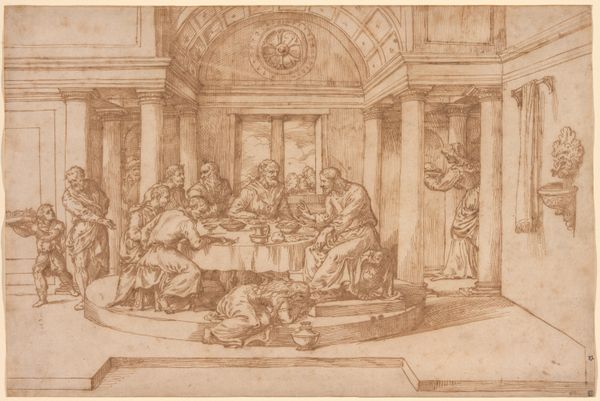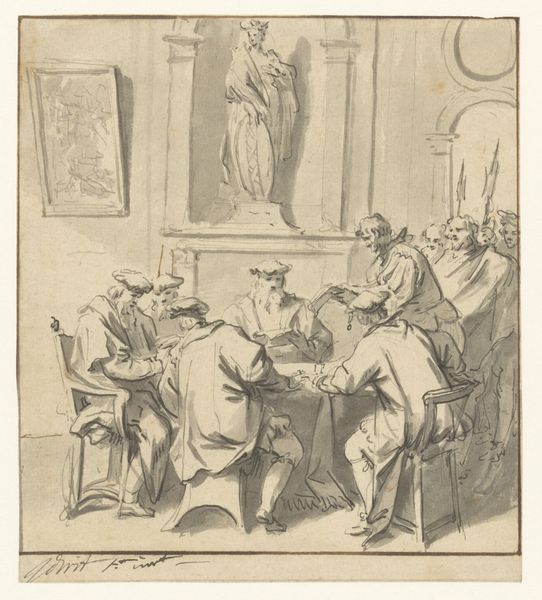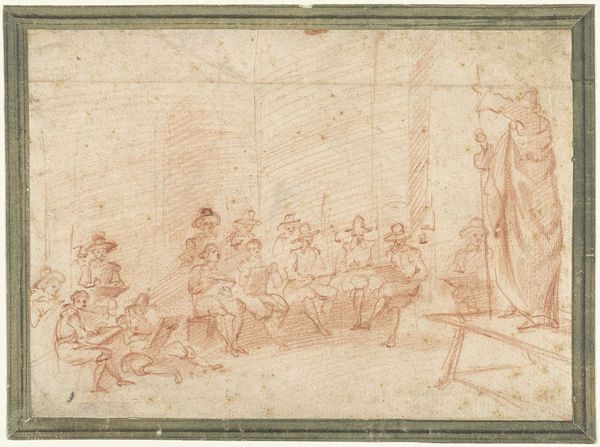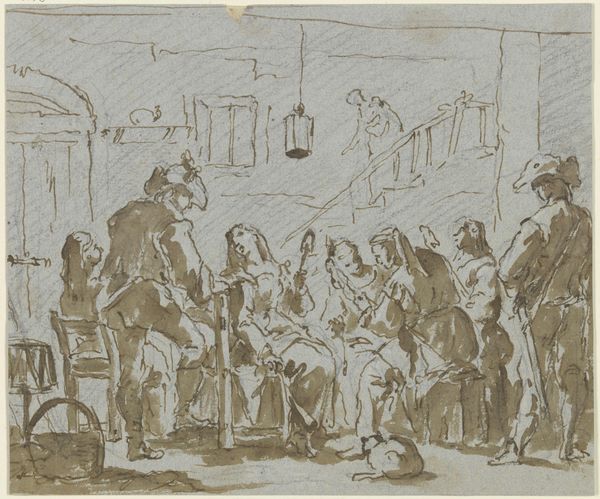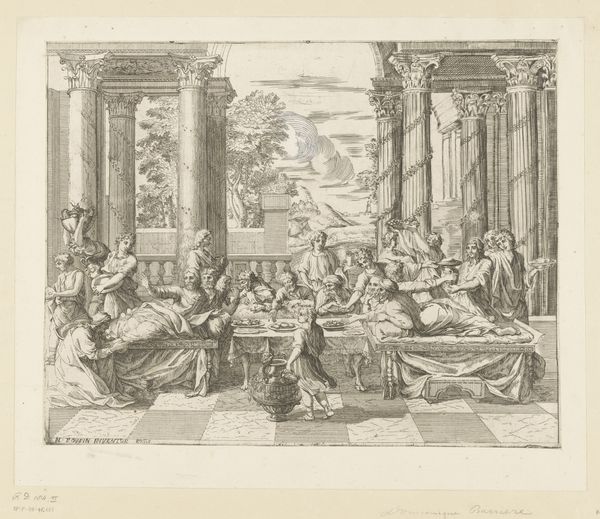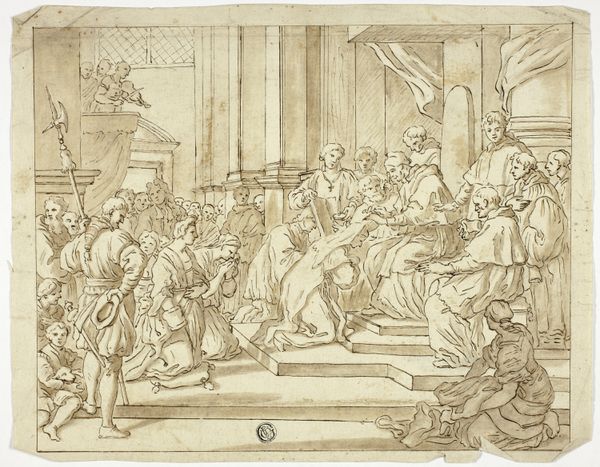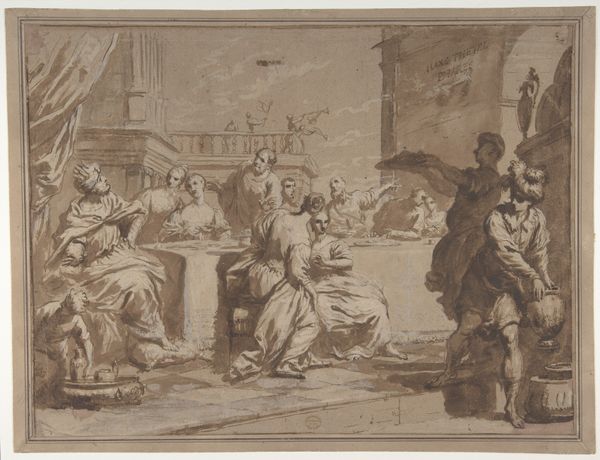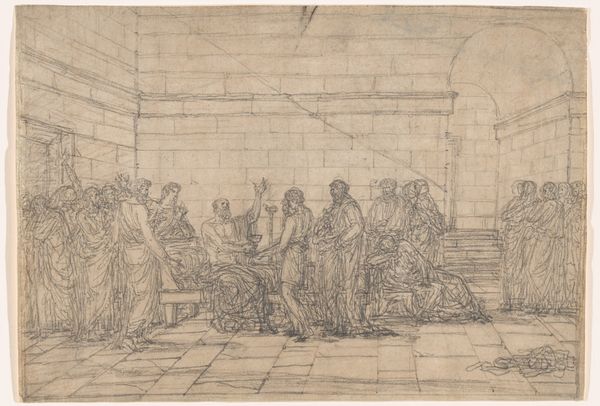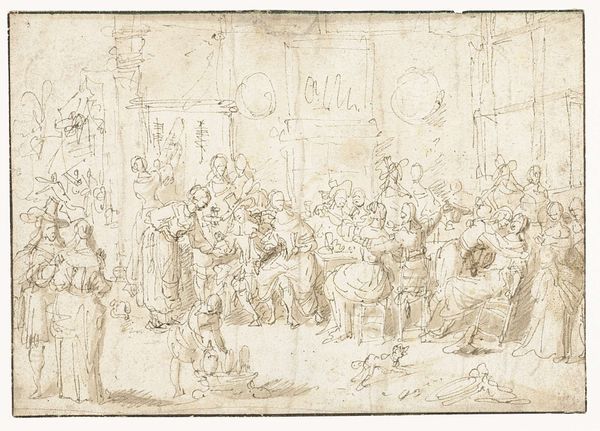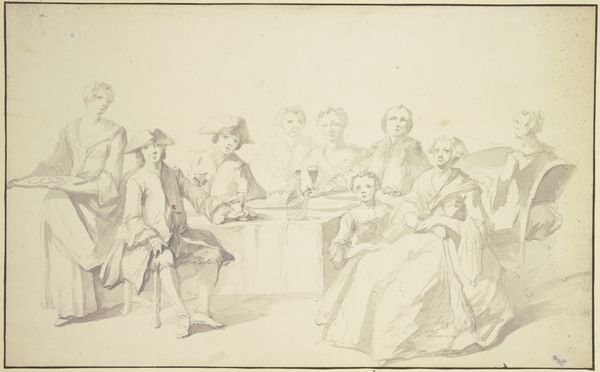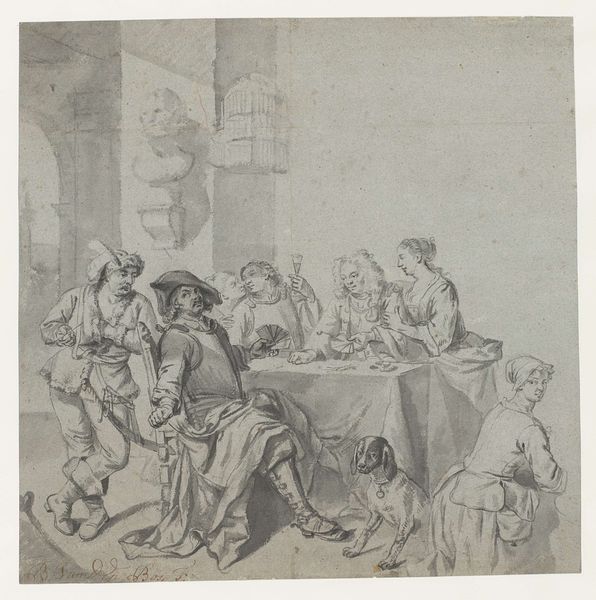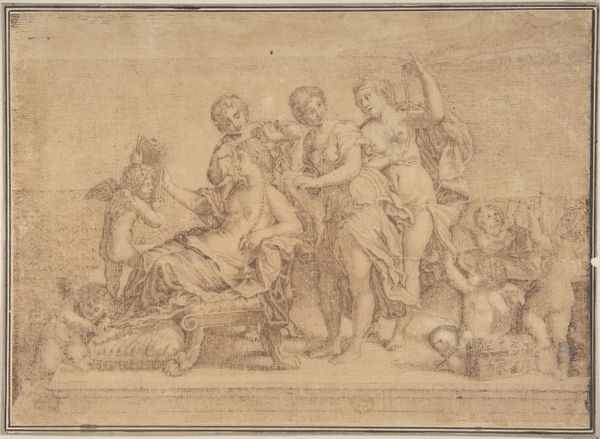
drawing, pencil
#
portrait
#
drawing
#
dutch-golden-age
#
group-portraits
#
pencil
Dimensions: height 347 mm, width 375 mm
Copyright: Rijks Museum: Open Domain
Curator: Looking at "Regents of the Amsterdam Nieuwe Zijds Huiszittenhuis," a pencil drawing created between 1640 and 1651 by Jacob Backer, now residing in the Rijksmuseum, my immediate reaction is one of hushed observation. There’s a stillness despite the assembly of figures. What do you see? Editor: It strikes me as quite somber. A gathering depicted in such muted tones immediately creates a contemplative mood. These men, these regents, appear to be grappling with serious issues of social welfare during the Dutch Golden Age. Their assembly feels like a silent reckoning. Curator: It’s intriguing to consider Backer’s process. Pencil work of this era reveals an interesting intersection between art as commodity and the labour involved. How were such drawings commissioned, priced? What was Backer’s own relationship to the Nieuwe Zijds Huiszittenhuis and poor relief in Amsterdam at the time? Editor: Exactly! The Dutch Golden Age wasn't golden for everyone, of course. Consider the social dynamics at play: wealthy regents overseeing an institution for the poor. The image inadvertently speaks to issues of class, power, and the social safety net. How are their decisions impacting those they're meant to serve? Curator: Backer's technical choices—the material limitations, the deliberate details he includes like the clothing, and the simple architectural rendering—emphasize their role within a defined physical and social structure. I find it difficult to interpret these details, though, beyond the material status the men in the foreground portray. Editor: I would propose looking further than mere representation. Think of it in light of later depictions of welfare boards by someone like Daumier. These weren’t just portraits; they became mirrors reflecting societal attitudes toward poverty and philanthropy. They're fraught with their own subtle biases that reveal prevailing attitudes concerning charity at the time. Curator: Fascinating, considering the drawing is also a preparatory sketch, hinting at the labor required before the final rendering, whether painting or etching. Thanks for revealing those dimensions within it. Editor: The interplay of social context and artistic expression brings greater appreciation, yes? Curator: Indeed, understanding the regents' material context reveals the complexity in Dutch society and art. Editor: And for me, their quiet, introspective assembly holds up a mirror to the perennial questions around poverty, charity, and our obligations to one another.
Comments
No comments
Be the first to comment and join the conversation on the ultimate creative platform.
